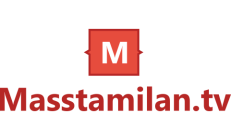Best Strategy for Customer Acquisition

Customer acquisition has become the defining challenge for today’s tech-driven businesses. Whether you operate in FinTech, agritech, foodtech, Meditech, or quick commerce, acquiring customers is not just about growth anymore. It is about survival. The increasing competition, shorter customer attention spans, and rising costs of digital marketing make the process more complex than ever.
A startup or scale-up with even the most innovative product will fail without a predictable and cost-effective acquisition strategy. You might have already experienced this. Your team builds a solid platform and solves a real problem, and yet your pipeline remains weak. Let’s discuss some ways to improve your customer acquisition rate.
10 Customer Acquisition Strategies to Consider
Here are some tips to improve your customer acquisition rate:
Customer Acquisition Solution
You must start with a dedicated customer acquisition solution that integrates marketing, onboarding, and retention features into a single dashboard. These platforms use behavioural data to help you find the right customer fit and automate your campaigns for higher conversions. Whether you are a Meditech startup or a food-tech business, a data-backed solution helps reduce manual tasks and improves personalisation.
Embedded Finance Integrations
You should embed your fintech service into other platforms to reach users right where they are transacting. For example, an agri-tech app selling seeds can integrate a loan calculator for financing crop inputs. In Meditech, you may offer EMI options directly inside the diagnostics booking platform. Quick commerce apps can include pay-later options at checkout. These integrations reduce friction and improve trust. Use APIs for seamless connection with payment gateways, insurance providers, and credit scoring tools. Ensure your backend is compliant and integrates seamlessly with a core banking solution to handle transactions securely and efficiently.
Referral Programs
You should launch referral campaigns that are hyper-local and community-driven. For example, if you operate in the agri-tech space, allow farmers or agri-cooperatives to refer your app to their peers in exchange for input subsidies or wallet credits. This builds a trusted chain of communication in low-internet zones. In fintech, you can reward verified referrals with cashback on digital payments.
Vernacular Content Marketing
You must create regional, vernacular content in Hindi, Tamil, Marathi, or Bengali to resonate with your target group. Instead of pushing complex jargon, explain your fintech or Meditech offerings through short explainer videos or stories. For agri-tech, use real-life farmer testimonials. In food tech or quick commerce, share behind-the-scenes logistics stories that build transparency.
Geo-Fenced Digital Campaigns
You can run geo-fenced ad campaigns that trigger promotions only when a user is within a specific location. This is highly useful for quick commerce startups targeting densely populated metros or for food-tech apps promoting restaurant offers. In Meditech, this can help drive walk-ins for diagnostics near hospitals. Use Google Ads or Meta platforms to deliver location-relevant offers. In agri-tech, geo-fencing helps in targeting specific mandis or grain markets.
B2B2C Channel Partnerships
You can expand rapidly by collaborating with micro-entrepreneurs, Kirana stores, chemists, or agri-dealers. In agri-tech, offer your services through local seed shops. In FinTech, train Kirana owners to educate their customers about UPI payments or small-ticket loans. Food tech platforms can partner with local cloud kitchens or snack vendors to expand their offerings. Meditech brands can collaborate with small diagnostic labs to increase foot traffic. This indirect model enables you to leverage the trust already established by these vendors while expanding your presence without incurring heavy fixed costs.
Hyperlocal Customer Support
You should offer local-language customer support through voice or WhatsApp. Many Indian users, especially in semi-urban or rural regions, hesitate to adopt new tech due to a lack of support. In FinTech, guiding someone through setting up UPI or activating KYC is a dealmaker. In Meditech, helping a first-time user book a pathology test can convert them into a loyal customer. You can deploy regional call centres or partner with hyperlocal call agents.
First-Time User Incentives
Offer meaningful incentives to first-time users, but design them according to the sector. For example, if you are in agri-tech, you can give discounts on the first soil test or crop advisory session. Food tech platforms can offer free delivery for the first few orders. In the Meditech sector, you can provide free consultations for general health queries. For quick commerce, you can offer limited-time discounts for orders above ₹99.
Mobile-First Gamification
Create a mobile-first gamified experience to keep users engaged. In agri-tech, reward farmers with badges for completing tasks within the crop cycle. In fintech, let users earn points for learning modules on savings or insurance. Food-tech companies can use leaderboards to recognise users who refer the most friends. Quick commerce can offer mystery box rewards on repeated purchases. Meditech can award health scores based on steps taken or regular consultation bookings.
Behavioural Nudges
You should adopt behavioural nudges to guide user actions. These can be well-timed alerts, notifications, or in-app guidance. For instance, a FinTech app can remind users to invest before their salary weekends. A food-tech platform can prompt users during regular meal times with tailored dish suggestions. In Meditech, you can remind users to renew prescriptions or book follow-up diagnostics. Agri-tech apps can nudge farmers with weather updates linked to pesticide advice.
Conclusion
To succeed in customer acquisition, you need a smart mix of tech-driven tools and localised strategies. From embedded finance and vernacular content to referral programmes and hyperlocal support, each approach serves a unique purpose. Whether you are in FinTech, food tech, agri-tech, or Meditech, tailoring your efforts to user behaviour, language, and geography makes all the difference. Focus on building trust, simplifying access, and creating value at every step to drive sustainable growth.





